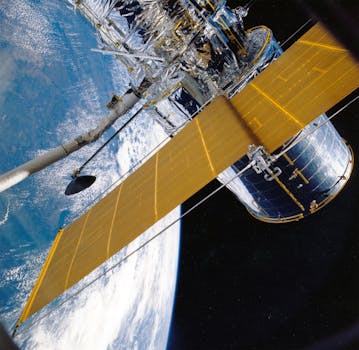
The Future is Now: Exploring the Cutting-Edge Innovations in Satellite Telecommunications
Satellite telecommunications is an exciting field that has experienced tremendous growth and innovation in recent years. The future is now, and satellite telecommunications is playing a vital role in shaping the future of global communication. Satellite telecommunications has come a long way since its inception, and today, it is an essential part of modern life. From providing internet access to remote areas to enabling global navigation and communication, satellite telecommunications has revolutionized the way we live and work.
One of the most significant innovations in satellite telecommunications is the development of High-Throughput Satellites (HTS). HTS technology allows for faster data transfer rates, making it possible to provide high-speed internet access to remote areas. This technology has been a game-changer for industries such as aviation, maritime, and rural broadband. Another area of innovation is the use of Low Earth Orbit (LEO) satellites. LEO satellites are smaller and less expensive to launch than traditional geostationary satellites, making them an attractive option for companies looking to provide global coverage.
The Rise of LEO Satellites
LEO satellites are being used for a variety of applications, including Earth observation, communication, and navigation. One of the most notable examples of LEO satellites is the Starlink constellation developed by SpaceX. Starlink is a network of thousands of LEO satellites that will provide high-speed internet access to the entire world. The constellation is still in development, but it has the potential to revolutionize the way we access the internet.
Another company that is making waves in the LEO satellite market is OneWeb. OneWeb is a global communications company that is developing a constellation of LEO satellites to provide high-speed internet access to underserved communities. The company has already launched several satellites and plans to have its full constellation in operation by the mid-2020s.
The Impact of Satellite Telecommunications on Society
Satellite telecommunications has had a profound impact on society, and its effects will only continue to grow in the coming years. One of the most significant impacts is the provision of global connectivity. Satellite telecommunications has made it possible for people in remote areas to access the internet, communicate with others, and stay connected to the rest of the world. This has had a significant impact on economic development, as it has enabled businesses to operate in areas that were previously inaccessible.
Satellite telecommunications has also had a significant impact on emergency response and disaster relief. Satellites can provide critical communication services during natural disasters, such as hurricanes, earthquakes, and tsunamis. They can also be used to provide search and rescue services, as well as to monitor environmental disasters such as oil spills and wildfires.
The Future of Satellite Telecommunications
As technology continues to evolve, we can expect to see even more innovative developments in satellite telecommunications. One area that is gaining significant attention is the use of artificial intelligence and machine learning in satellite telecommunications. These technologies have the potential to revolutionize the way we operate and manage satellite constellations, making them more efficient and effective.
Another area of innovation is the development of quantum communications via satellite. Quantum communications has the potential to provide unhackable communication services, making it an attractive option for governments and industries that require high levels of security. Companies such as Google and Microsoft are already exploring the potential of quantum communications via satellite, and we can expect to see significant developments in this area in the coming years.




